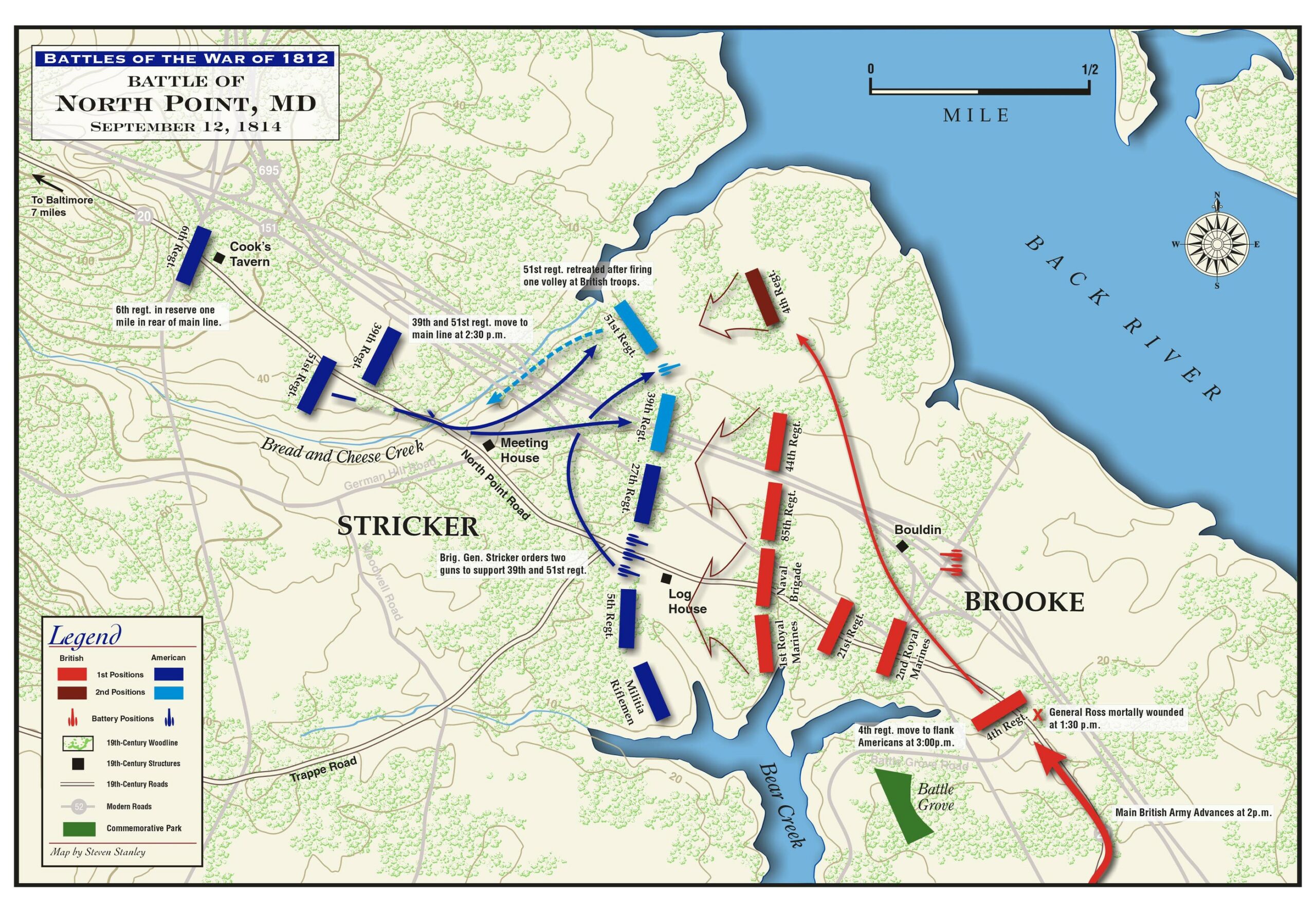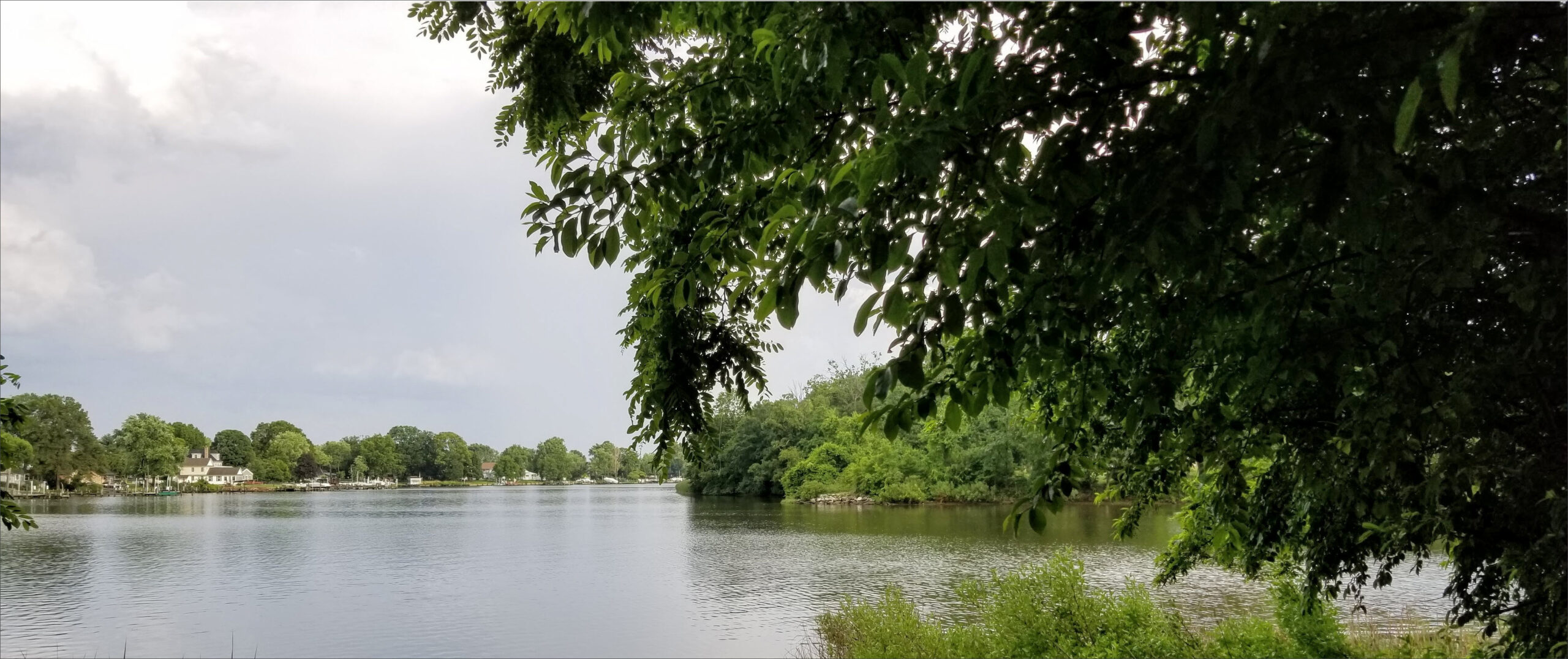$250,000 County Grant Will Fund Initial Design & Construction of the Bear Creek Heritage Trail in Dundalk
In early September 1814, a sizeable British fleet entered the mouth of the Patapsco River with Baltimore as its target. That fleet carried a small army intent upon punishing Baltimore for its participation in the War of 1812. After debarking at North Point, that army advanced up the Patapsco Neck peninsula en route to its planned assault on Baltimore from its eastern, landward, side.
The U.S. commander responsible for protecting Baltimore was Major General Sam Smith, a Revolutionary War veteran and Baltimore resident. Smith was familiar with both British tactics and Baltimore’s approaches by water and land. As early as 1813, Smith was sure that a British attack would land soldiers at North Point and approach Baltimore from the east by advancing up Patapsco Neck. He was also confident that the Royal Navy would advance up the Patapsco River from North Point in order to attack Baltimore from the south. In that case, Bear Creek held a very special position by virtue of the fact that its head sat astride the British army’s path of advance along Patapsco Neck, and its mouth sat astride the Royal Navy’s path to Baltimore.
It was at Godly Wood, at the head of Bear Creek, that Smith planned to fully engage the British in what today would be called a covering force operation. Smith’s intent was to advance an independent fighting force approximately 5 miles forward of Hampstead Hill for the purpose of intercepting the enemy. That covering force would place its main defensive line at the narrowest part of Patapsco Neck-- by virtue of Bear Creek-- and serve as a choke point for British forces. At that location, Smith’s militia forces would be in a strong position with their right flank firmly anchored on the head of Bear Creek and their left on a marshy area near Back River.

While this was a sound plan for what would happen at the head of Bear Creek, attention also had to be paid to what happened at its mouth. For this, Smith turned to local resident and military veteran Commodore Joshua Barney, who developed a militia camp to stand guard on the lower reaches of Bear Creek.5 Similarly, from North Point to Godley Wood, light cavalry videttes were posted at several residents’ homes to watch for any enemy activity on or near Patapsco Neck.
The battle unfolded as Smith predicted it would with the British advancing up Patapsco Neck and with local residents and militia around Bear Creek playing key roles in successfully defending Baltimore against the invading British force. This is an epic story of community heroism that deserves a much greater hearing than it currently receives. (In fact, NeighborSpace received grant support last year to work with Stevenson University on a project to research and document the roles played by community members in this battle). Moreover, it happened in a place that, still today, offers breathtaking views of the water. These are among the reasons that have been driving NeighborSpace and a core group of local Dundalk residents to advocate for construction of the Bear Creek Heritage Trail, which will traverse much of the area that was the subject of the epic battle and tell its story in narrative signage.

And, today, I am proud to say that, owing to the support of County Executive Olszewski and a $250,000 grant from Baltimore County, the first phases of the trail are going to be designed and built. We are deeply grateful to the County Executive and to the Planning Director, Steve Lafferty, whose office is providing guidance with expenditure of the grant proceeds. A request for design-build proposals has been issued and is available on the NeighborSpace website. Responses are due June 15 and we are hopeful that work on the initial phases will be completed in 18 months.
Pingback: Blazing A Trail Along Bear Creek – NeighborSpace of Baltimore County